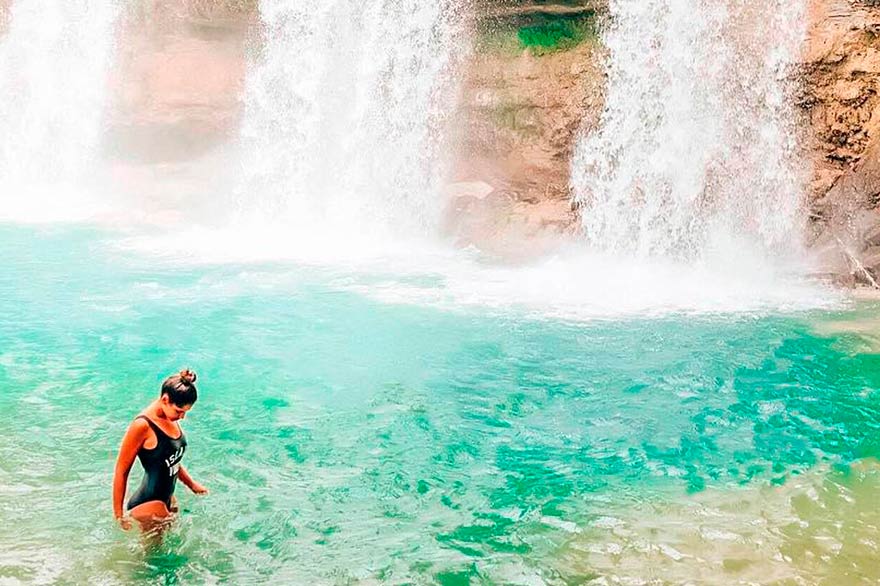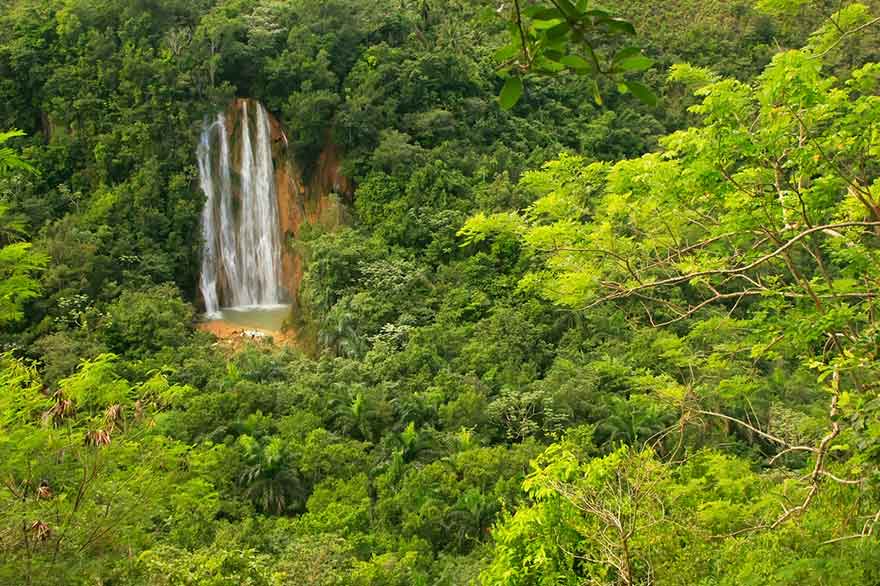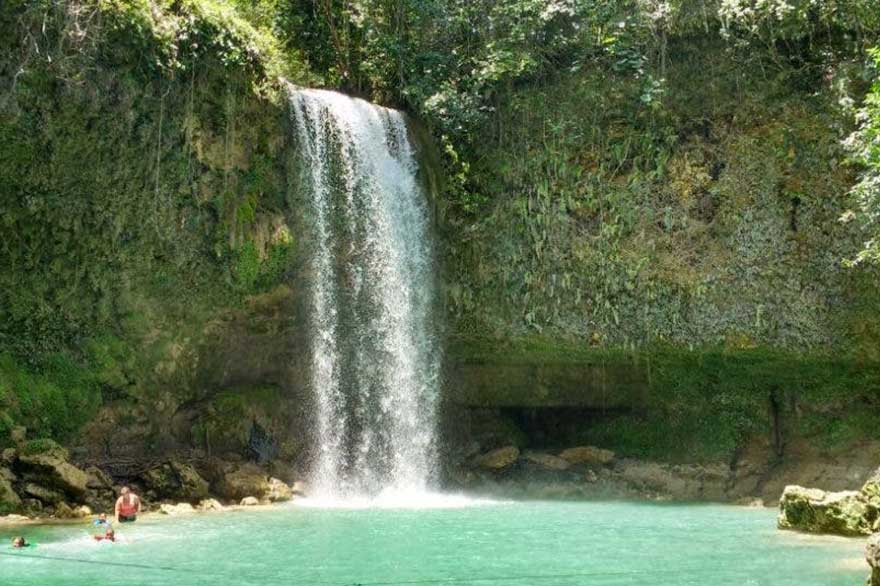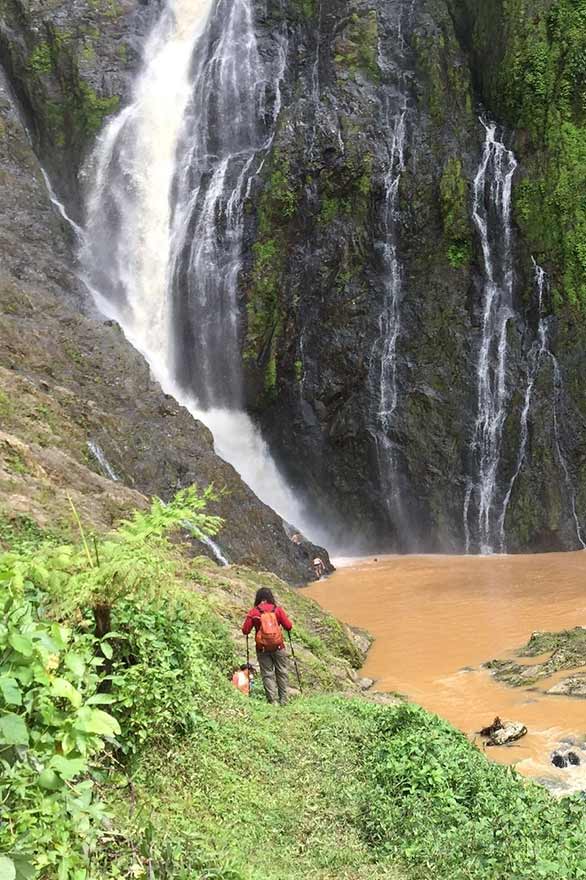
10 Mar Salto Alto in Bayaguana, a Must-See
Salto Alto in Bayaguana, a Must-See
In addition to its long beaches and crystal clear waters, the Dominican Republic is also known for its many gems of nature. A few kilometres from the municipality of Bayaguana, in the province of Monte Plata, we can find Salto Alto, one of the most spectacular natural pools in Punta Cana and one of the most famous natural attractions on the island.
The Salto Alto waterfalls in Bayaguana are a gold mine for anyone looking for a quiet place, with refreshing waters immersed in the sounds of nature.
This natural landscape is made up of three imposing waterfalls that are more than 10 metres high and the basin is surrounded by abundant tropical vegetation. Without a doubt, it is the ideal spot for those who love ecotourism.
To get to Salto Alto from Santo Domingo, you can follow the Northeast motorway on a journey that lasts about 72 km on a road in good condition. After around an hour and a half of travel, you will have reached your destination. To preserve and protect the natural environment, the waterfalls have an entrance fee of 100 Dominican pesos per person (approximately $1.73).
At this point, you will be able to find a restaurant/café where visitors normally buy some food to spend the day in the natural setting of Bayaguana. From here, the journey by car becomes a bit complicated, since the road is unpaved. You will need to walk the last bit of the route, so you should wear hiking shoes. However, once you have reached the natural pool and can take in the wonderful tropical landscape that Salto Alto offers, it will have been well worth the long journey.
Other natural pools in Punta Cana
The inland part of the Dominican Republic has many tropical landscapes hidden away, whose plants and wildlife are as diverse as they are unique. And, on the island of Hispaniola, not only can we find the Salto Alto in Bayaguana, but there are also other waterfalls as impressive that are worth mentioning.
El Limón or Salto del Limón waterfall

The excursion to this wonderful spot, located in the El Limón municipal district, can be done on foot or by horse or donkey and can take anywhere from 5 to 6 hours. You can reach these waterfalls by four different routes, all of which have rest stops where you can find small food stalls with typical Dominican food.
Around the waterfall there are caves that you can visit, or if you prefer, you can enjoy relaxing in the natural pool with its characteristic turquoise blue colour.
Salto Socoa

Image source: elnuevodiario.com.do
Also located in the province of Monte Plata is Salto de Socoa, in the municipality of Sabana Grande de Boyá, near the Los Haitises National Park.
In order to access this spot, each visitor must pay about 50 Dominican pesos (about $0.86 approximately), unless you want to park here, in which case you will have to pay 100 Dominican pesos.
This waterfall is about 20 metres high, which culminates in an impressive natural pool with crystal clear water.
Salto de la Jalda

Image source: alltrails.com
This natural pool is located just one hour from Punta Cana and is the tallest waterfall in the Caribbean region, rising up more than 120 metres.
This impressive waterfall is very well hidden among the abundant vegetation, which makes it less frequently visited. In fact, something that makes this waterfall unique is that it can be accessed both by air and by land. If you want to arrive by air, the fastest way to get here is by helicopter, as a heliport was built at the base of the river to facilitate the journey without interfering with the natural course of the water. If you choose this means of transport, you will be able to get a bird’s eye view of how the water makes its way down the mountain.
On the contrary, if you decide to get here on foot or on horseback, you will come in direct contact with the lush natural surroundings while getting to admire the diverse vegetation and native birds.
As you can see, the natural pools that Punta Cana offers are of high environmental value and it is always worth setting aside a few days of your trip to head into the exuberant jungle and discover one of the most characteristic elements of Dominican biodiversity: its waterfalls.




No Comments